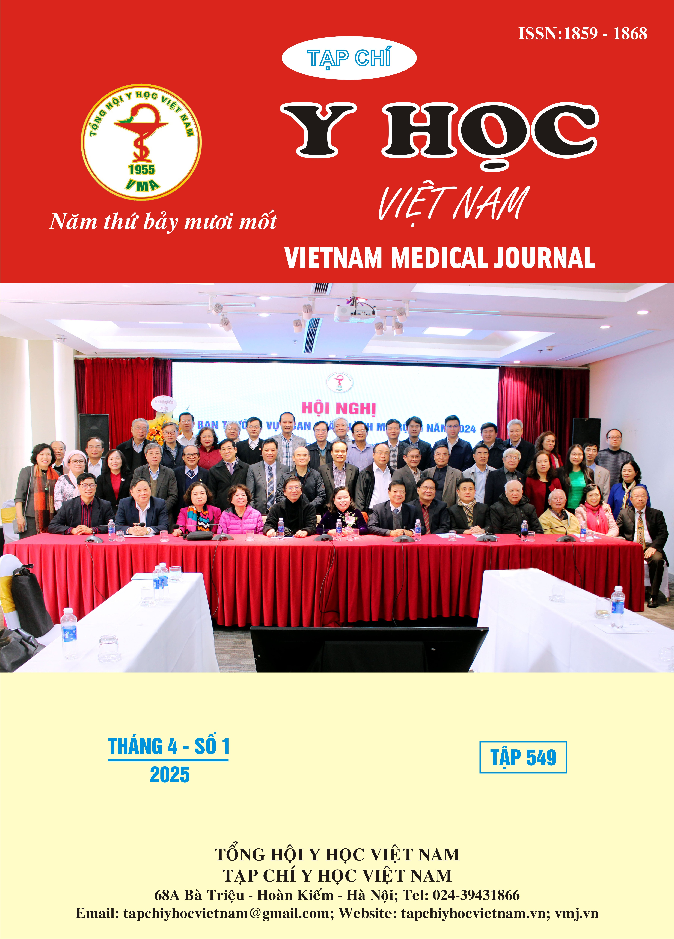KẾT QUẢ CAN THIỆP NỘI MẠCH HẸP TẮC ĐỘNG MẠCH CHỦ CHẬU, CHI DƯỚI Ở BỆNH NHÂN CAO TUỔI
Nội dung chính của bài viết
Tóm tắt
Đặt vấn đề: Xơ vữa động mạch là bệnh thường gặp ở người cao tuổi. Trong đó, biến chứng nguy hiểm là hẹp tắc động mạch chủ chậu, chi dưới. Gần đây, điều trị bằng phương pháp can thiệp nội mạch được triển khai, nhưng kết quả áp dụng trên bệnh nhân cao tuổi còn ít thông tin. Đối tượng và phương pháp: cắt ngang mô tả đặc điểm bệnh nhân cao tuổi hẹp tắc động mạch chủ chậu, chi dưới và kết quả can thiệp nội mạch từ 01/2023-06/2024 tại bệnh viện Thống Nhất. Kết quả: nghiên cứu thu thập được 77 bệnh nhân, nam giới là 72,8%, nữ giới là 27,2%. Tuổi trung bình 68,3 + 11,7. Yếu tố nguy cơ rối loạn chuyển hóa lipid là 45,4%, bệnh tăng huyết áp là 41,5%. Tổn thương mạch máu ở một tầng giải phẫu là 63,6%, nhiều tầng là 36,3%. Triệu chứng lâm sàng đau khi nghỉ (độ V theo Rutherford) là 35,1%; Mất mô là 32,5%. ABI khoảng 0,5-0,9 là 67,5%. Thời gian can thiệp nội mạch (phút) là 159,2 + 29,3. Thời gian nằm viện (ngày) là 4,3 + 2,6. Tỉ lệ tái thông nguyên phát là 92,2%, tỉ lệ cải thiện triệu chứng lâm sàng là 90,9%. ABI trước can thiệp là 0,51 + 0,13; sau can thiệp nội mạch là 0,78 + 0,14 (p=0,004). Có 01 trường hợp thủng động mạch chậu chung chuyển phẫu thuật mở, 02 trường hợp tắc giá đỡ. Kết luận: kết quả tái thông thành công là 92,2%, quá trình điều trị có một số biến chứng nhưng tỉ lệ thấp. Điều trị hẹp tắc động mạch chủ chậu, chi dưới bằng phương pháp can thiệp nội mạch có thể áp dụng bệnh nhân cao tuổi có nhiều nguy cơ.
Chi tiết bài viết
Từ khóa
can thiệp nội mạch, người cao tuổi, xơ vữa động mạch
Tài liệu tham khảo
2. Victor Aboyans et al (2018). “Editor’s Choice e 2017 ESC Guidelines on the Diagnosis and Treatment of Peripheral Arterial Diseases, in collaboration with the European Society for Vascular Surgery (ESVS)”. Eur J Vasc Endovasc Surg (2018) 55, 305-368.
3. Jaff MR, White CJ, Hiatt WR, Fowkes GR, Dormandy J, Razavi M, Reekers J, Norgren L. An Update on Methods for Revascularization and Expansion of the TASC Lesion Classification to Include Below-the-Knee Arteries: A Supplement to the Inter-Society Consensus for the Management of Peripheral Arterial Disease (TASC II). TASC Steering Committee, J Endovasc Ther. 2015;22(5):663. Epub 2015 Aug 3.
4. Cheuk Pang Wong, Lok Pong Chan et al. Efficacy and Safety of Intravascular Lithotripsy in Lower Extremity Peripheral Artery Disease: A Systematic Review and Meta-Analysis. European Journal of Vascular and Endovascular Surgery. Volume 63, Issue 3, March 2022, Pages 446-456.
5. Kyu Kim , Young-Guk Ko et al (2018). Clinical Outcomes of Subintimal vs. Intraluminal Revascularization Approaches for Long Femoropopliteal Occlusions in a Korean Multicenter Retrospective Registry Cohort. Circ J 2018 Jun 25;82(7):1900-1907.
6. Baril DT, Chaer RA, Rhee RY, et al (2010). “Endovascular interventions for TASC II D femoropopliteal lesions”. J Vasc Surg,51(6):1406-12.
7. Naoki Hayakawa, Satoshi Kodera et al (2022). “Clinical outcome of drug-coated balloon versus scaffold device in patients with superficial femoral artery chronic total occlusion”. Heart Vessels. 2022 Feb;37(2):282-290.
8. Kobayashi, K. Hirano, M. Nakano et al. (2015). "Predictors of nonhealing in patients with critical limb ischemia and tissue loss following successful endovascular therapy". Catheter Cardiovasc Interv, 85(5), pp. 850-858.


